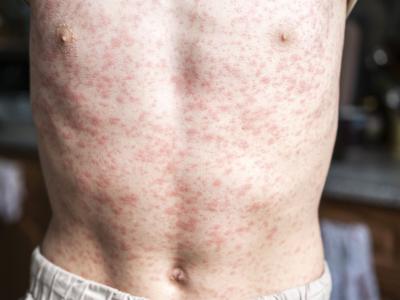WHO details maternal-fetal Zika findings in Martinique microcephaly case
The World Health Organization (WHO) on Apr 1 shared more information about Martinique's first probable Zika-related microcephaly case, which documents Zika virus infection in the mother and the fetus.
Also, Brazilian researchers today reported on clinical patterns they saw in people who tested positive for the virus in an acute care clinic, and the US Centers for Disease Control and Prevention (CDC) added Fiji to its list of countries for which is has travel advisories.
A series of serology tests in December, January, and February confirmed flavivirus and other infections in the Martinique mother. In the second test in January she was positive for immunoglobulin G (IgG) against flavivirus and chikunguna and for IgM antibodies against Zika virus.
The microcephaly diagnosis was made at just over 22 weeks gestation on Mar 10. A week later, amniotic fluid and fetal blood samples were positive for Zika virus on polymerase chain reaction testing, and the results were confirmed on Mar 22. Doctors had recommended medical termination of the pregnancy.
Details of the case help shed light on maternal and fetal Zika virus infection, suggesting that the risk is high during early pregnancy, though more investigations are needed to fully describe the role of the virus in the development of congenital abnormalities, the WHO said. It added that the case shows that the fetus can test positive for the virus months after the mother's initial infection.
Apr 1 WHO statement
Rash was the most common Zika symptoms that sent patients to doctor's offices, according to a retrospective case series of 57 Brazilian patients described today in a letter in Emerging Infectious Diseases.
The convenience sample reflects people who were seen at an acute care clinic in Rio de Janiero from Apr 28 to Jun 8, 2015, and tested positive for the virus. Rash was reported by 98% of patients. Other common symptoms included headache (67%), low-grade fever (67%), joint pain (58%), and muscle pain (49%). Conjunctivitis and retro-orbital eye pain were also seen in more than a third of the cases.
Apr 4 Emerg Infect Dis letter
Finally, the CDC today posted a "level 2" Zika virus travel notice for Fiji, which means travelers should practice enhanced precautions such as avoid mosquito bites. It also recommends that pregnant women or those planning on becoming pregnant not travel to such countries or territories, which now number 42.
CDC travel notice page
Study: Women more likely than men to receive antibiotic prescriptions
Women are 27% more likely to be prescribed antibiotics in their lifetime when compared to men, according to a study yesterday in the Journal of Antimicrobial Chemotherapy.
A team of researchers from German and Swedish institutions reviewed 11 studies of antibiotic prescription practices in primary care practices. Studies were published between 1976 and 2013; obtained surveillance data from pharmacy, insurance, or national healthcare systems; and represented 44,333,839 people.
The number of antibiotics prescribed to women ages 35 to 54 was 40% higher than men in the same age group, and women ages 16-34 had a 36% higher rate of antibiotic prescriptions compared to their male peers, the authors said.
Researchers observed especially high gender differences in the cephalosporin and macrolide antibiotic classes, with 44% and 32% higher numbers of prescriptions, respectively, written for women.
The authors said that more research is needed into the reasons behind gender differences in antibiotic prescription practices, as well as into any potential gender inequality in antibiotic resistance rates.
Apr 3 J Antimicrob Chemother study
Philippines begins world's first dengue immunization program
The Philippines began the world's first public immunization program for dengue fever this Monday, according to an Associated Press (AP) story. The government subsidized the $76 million cost for the three-dose vaccine Dengvaxia, and children under the public health system and public school system have already begun to receive their free vaccinations.
Although the WHO has not finished its assessment of vaccine effectiveness in the Philippines, Dengvaxia has already been approved by the country's food and drug administration, according to CNN Philippines. The WHO should be finished with its review soon.
In support of the new program, the nation's health department cited a study done by a University of the Philippines-Manila professor that suggested the vaccine can reduce dengue cases by 24.2% in 9-year-olds within 5 years, the CNN story said.
Dengvaxia was developed by the French pharmaceutical company Sanofi Pasteur and is the first licensed vaccine to treat dengue, according to the AP report. The vaccine has been shown to be effective for all four strains of dengue.
In 2015, the Philippines had 200,415 suspected cases of the mosquito-spread disease, according to WHO data.
Apr 4 AP story
Mar 31 CNN Philippines article













